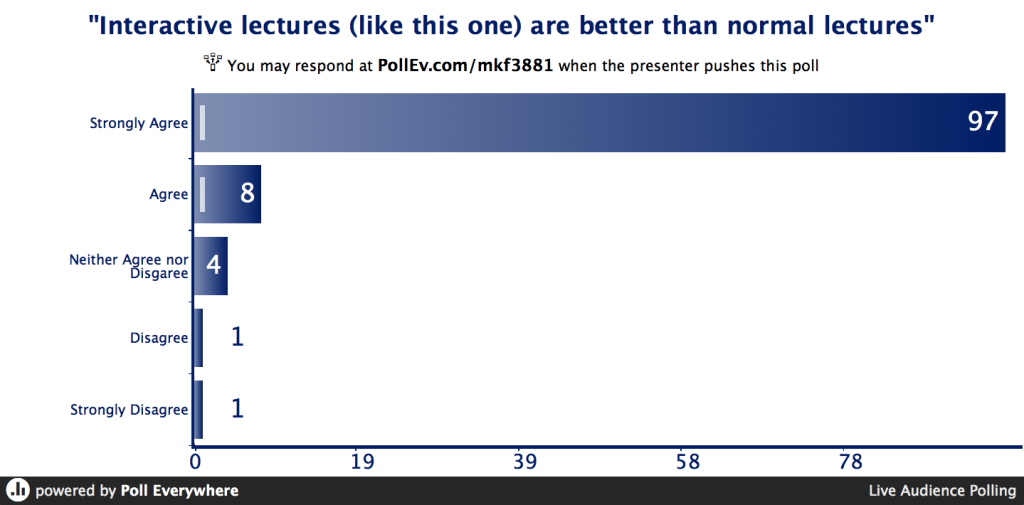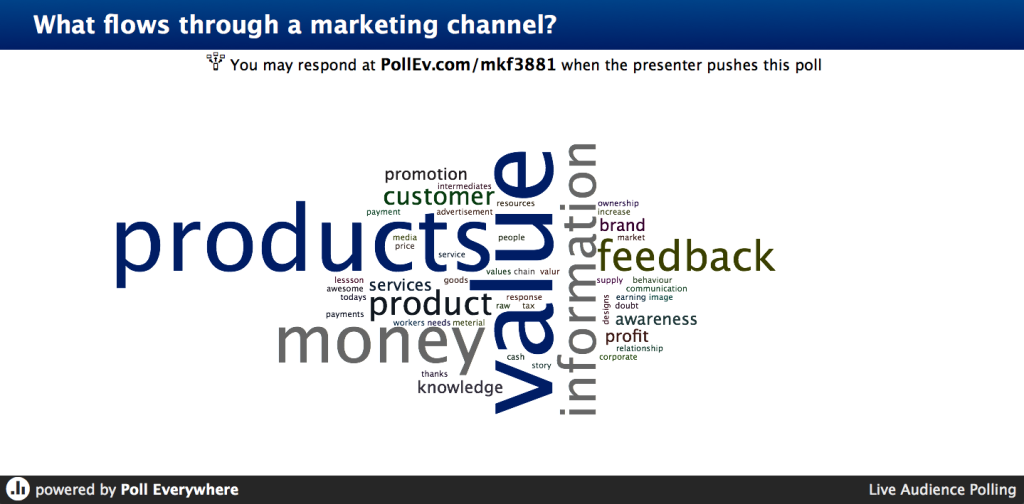Why Flipping the Classroom Is Easier (and Smarter) than Ever

The buzz about flipped classrooms only seems to get louder. Here’s how it started, why it matters, and why it’s easier every day.
For decades, instructors have struggled with how to find the best way to deliver quality academic content to a large number of students at once. On campuses with large student enrollment, the solution seemed simple: huge lecture halls where hundreds, sometimes thousands, of students learn from a single lecturer.
This “Sage on the Stage” model of instruction has persisted for the better part of the last century as a flawed solution. However, instructors and students alike still complain about the lack of personal interaction and engagement that this arrangement fosters.
As a result, many instructors are considering new models of instruction that leverage the best practices of teaching, and the newest capabilities of technology.
The Flipped Classroom
The “flipped” classroom—also called blended learning, an inverted classroom, or a backwards/reverse classroom—is a model in which instruction takes place outside of the lecture hall, and peer-to-peer interaction takes its place during class sessions.
This approach has been used for decades in the form of homework and small group work, but the flipped classroom recently began to gain attention for its ability to bring instructors, students, and course content into closer interaction in the lecture hall.
Inside Higher Ed, for example, first wrote about flipped classrooms in 2011, and even then, only as a way of reporting what was happening in many K-12 classrooms (Stoller, 2011). Likewise, The Chronicle of Higher Education first published an account of flipping a course through its affiliate blog that same year (Talbert, 2011). Both of these influential publications only started writing about the flipped model widely from 2012 on.
So, if you think you’re late to the flipped revolution, think again.
The Main Ingredients of a Flipped Classroom
Since 2012, literature on flipped classrooms speaks of two major components:
- Peer workshops and problem-solving activities
- Technology that can be used both in and out of the classroom
Flipped classrooms typically work like this: in class, students are broken into groups to apply the content they learn outside of class. In this way, students can only participate if they do their homework, and large lecture halls of hundreds of students may be quickly broken down into groups of 2-20 students. The instructors can lead discussions, check for questions, and review materials as needed.
Outside of class, students most often watch a lecture as an online video. They may also read the lecture as a PDF, see lecture slides at their own pace, or listen to the lecture as a podcast. This content is combined with course readings, relies on students’ access to extracurricular technology, and frees up class time for the group work mentioned above.
Combining these two things—peer-based pedagogy and interactive technology—is the foundation of flipping the classroom. This is where Poll Everywhere has stepped in to assist professors like Peter Wagstaff.
Benefits of Flipping
Wagstaff is a Lecturer of Marketing at Monash University, the largest university in terms of student enrollment in Australia. Located on a campus in Melbourne, Wagstaff’s course offerings typically include a first-year marketing class required for all business students. The 12-week course enrolls approximately 700 students, which has historically been broken up into two 350-person lectures per week.
For the past two years, though, Wagstaff has been experimenting with new educational technologies, including PollEverywhere. And this year, unhappy with the often impersonal large lectures, he has been flipping his classroom.
The results, he says, are uniformly positive.
Real-Time Feedback on Comprehension and Application
Combining online videos and in-class small groups, Wagstaff and his instructors evaluate students’ abilities to apply course content to real world examples. He uses Poll Everywhere to diagnose students’ comfort with the course materials. If students’ real-time evaluations show comprehension, he allows group work to continue. However, if students are seen as struggling, he can quickly adapt and deliver as-needed lectures in response.
Wagstaff’s use of flipped classrooms has not only pleased him, but also the students and administrators to whom he answers.
Learning, Engagement, and Positive Perception
“I evaluate the success [of the flipped class] on three levels. Student learning outcomes is an obvious one; are they learning, and how are they gaining knowledge? And that’s improved in terms of their assessment results,” he said in a recent interview.
The second level, he notes, is “student engagement, that is the extent to which they are working through the content online, prior to coming to class. And the beauty of online is that I’m gathering incredible amounts of data on each student, to look at their behaviors and how they are using the video content. So, levels of engagement are high.”
And his third level as self-assessment is in line with university standards. “[T]he third measure is student perception of the overall course. The university has regular student evaluations and surveys, and they’ve actually improved as a result of this.”
Slow Changes, Big Results
By applying a flipped model of instruction to his large lectures, Wagstaff has, among other things, made his life as an instructor easier. The key to succeeding in such a shift, he reports, is to introduce the change incrementally.
Not many on college campuses are open to drastic change right away, but according to Wagstaff, the experience and data he’s collected over the past two years unanimously points to the flipped classroom as the way of the future for his courses.
Stoller, E. (2011). “#ISTE11 – #EdTech + Students + Learning.” Inside Higher Ed. Web.
Talbert, R. (2011). “Targeting the Inverted Classroom Approach.” The Chronicle of Higher Education. Web. http://chronicle.com/blognetwork/castingoutnines/2011/05/09/targeting-the-inverted-classroom-approach/




